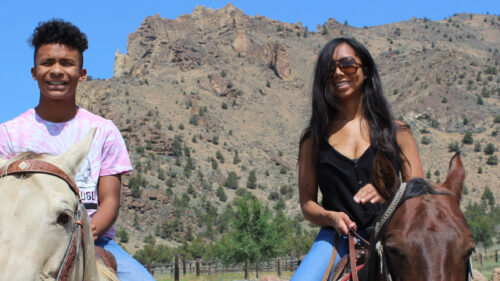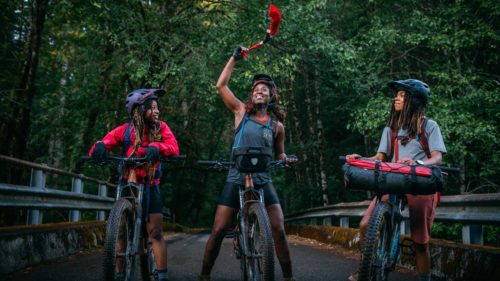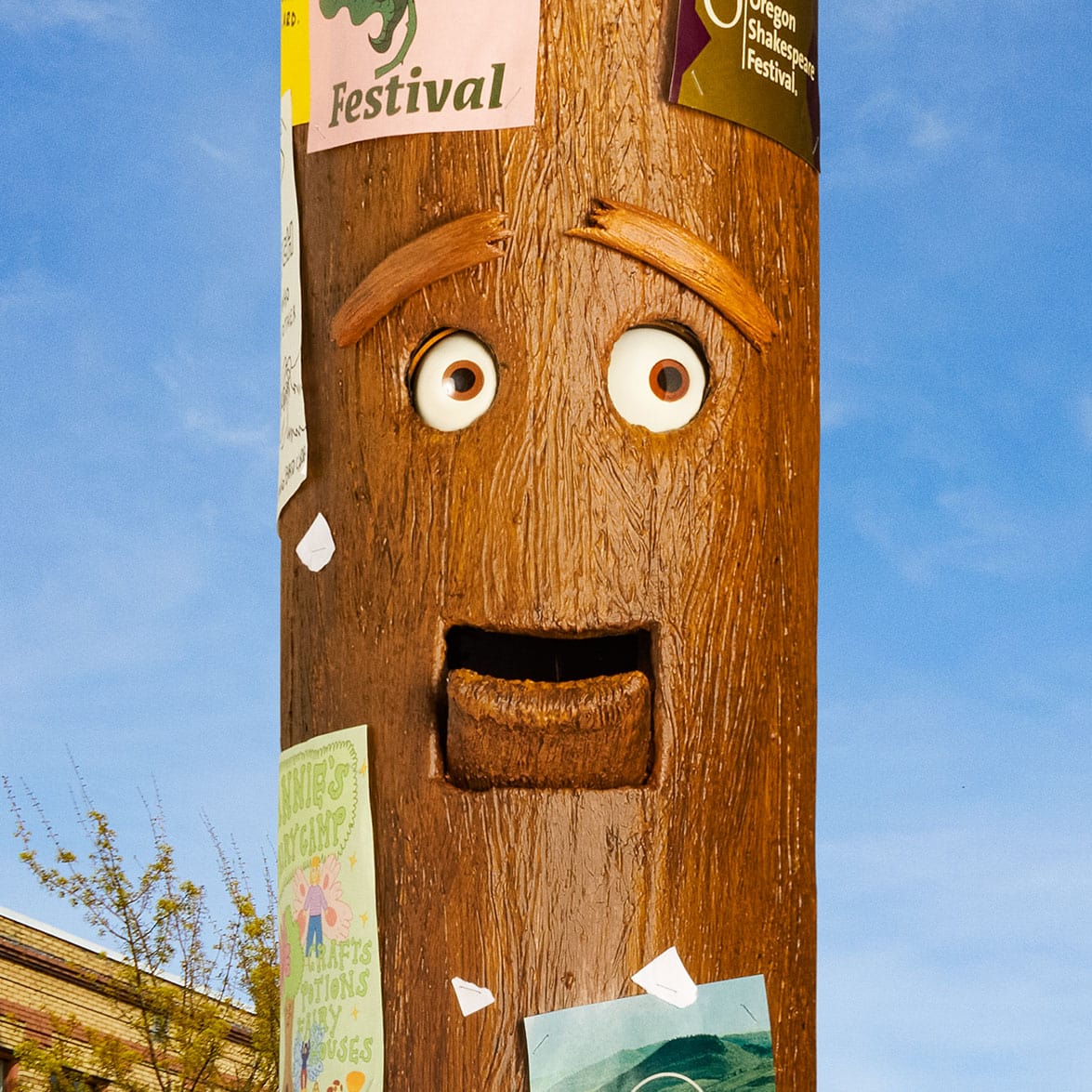A new mobile app is engaging users with the Black history of Eugene while getting them moving at the same time. Strides for Social Justice (free for Apple and Android users) offers a self-guided walking tour that shares stories of local historical sites and monuments honoring the achievements of Eugene’s Black residents.
As listeners walk or bike the routes through five neighborhoods, they are invited to reflect and participate in fitness activities, like circuit exercises in Westmoreland Park or leg stretches on Skinner Butte.
“It really engages the mind, body and soul,” says Marcy Marshall, senior director of marketing and communications at PeaceHealth Oregon network, which developed the app in partnership with the Eugene Marathon. “Understanding the history and reflecting on it are really critical to creating awareness and understanding, and hopefully will prompt action to stop perpetuating systemic racism.”
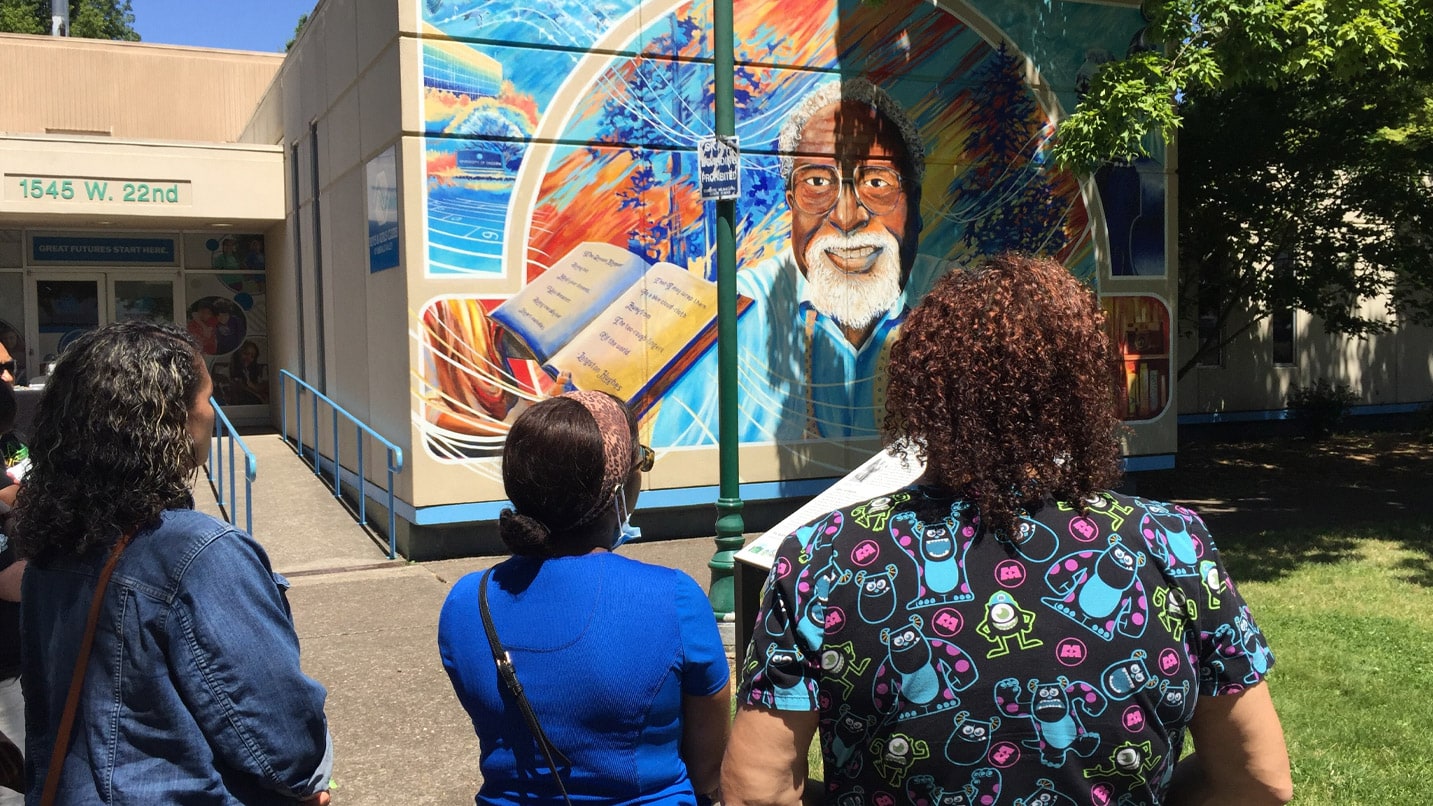
Choose From Seven Tour Routes
The app, which can be downloaded through PeaceHealth’s website, encourages users not to run away from Oregon’s racist history but instead to stride right into it. Users choose from among five different tour routes — Downtown, Skinner Butte Park, South Eugene, West Eugene and Westmoreland Park — and listen as a guided narrative reveals the persistence and endurance of Black residents affected by the legacy of Oregon’s exclusion laws and other historically racist policies. The website also lists ways to take action and donate to Black causes, like scholarship initiatives at the Eugene-Springfield NAACP and Oregon Black Education Foundation.
The tour guides for the route are Eugene locals. University of Oregon’s vice president for equity and inclusion Dr. Yvette Alex-Assensoh offers thoughtful reflection to contextualize the various photos and historical information provided for each stop. Denise Thomas, CEO of Let’s Move Fitness and executive director of the school fitness education organization Healthy Moves, adds the “strides” part: She guides users through stretching and exercise routines as they explore the locations.
With Eugene Marathon staff and others, Thomas timed each walk and laid out appropriate conditioning and fitness programs. The routes move listeners physically through the pattern of Black migration in Eugene from downtown to West Eugene, with stops at significant locations along the way at Skinner Butte, in South Eugene and in Westmoreland.
Thomas explains the unusual conditioning angle: “We thought we’d also help future generations, adding ways for adults to address health issues that affect the Black community like obesity and diabetes, and to teach youth how to be healthy through movement.”
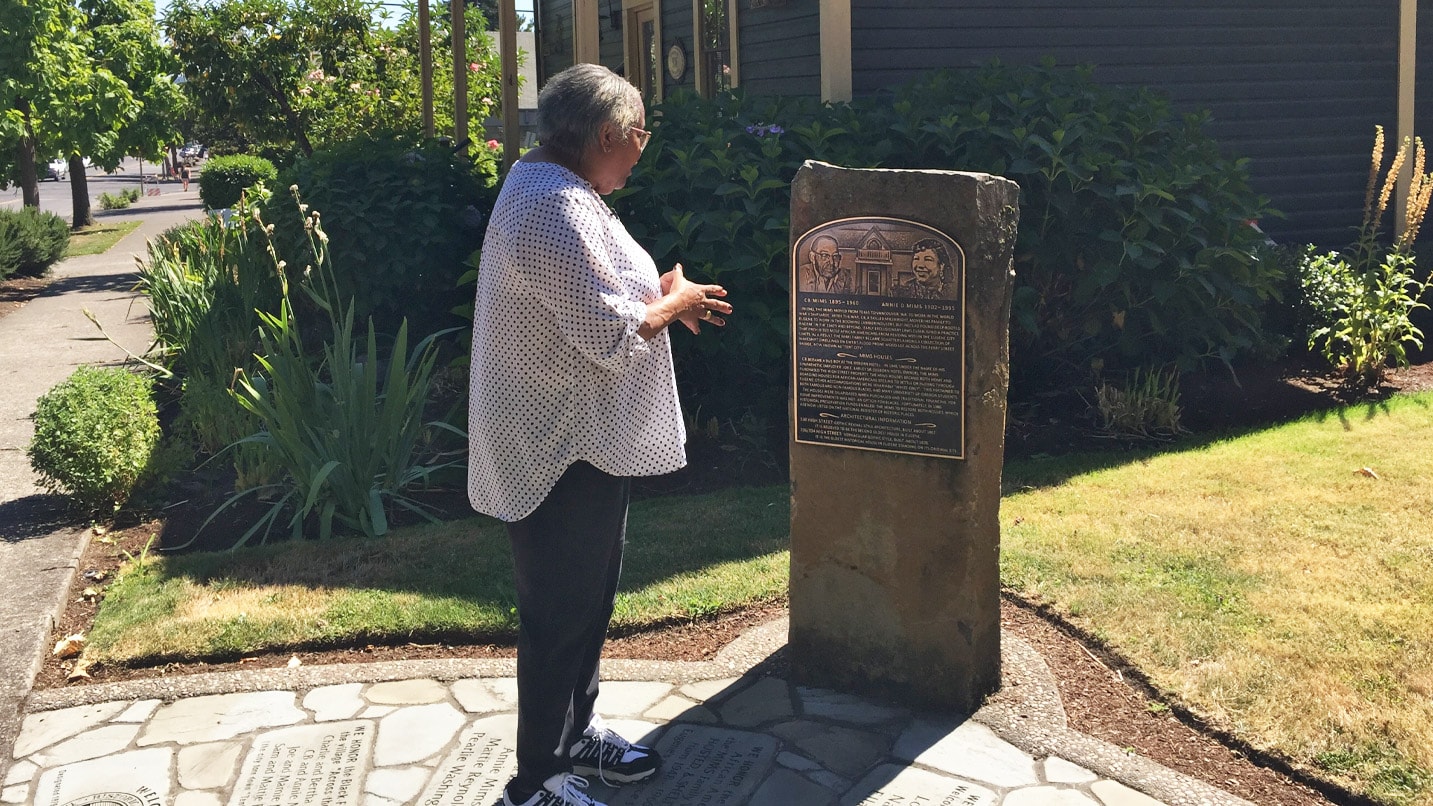
Downtown Eugene
The first stop on the Downtown Eugene tour is Alton Baker Park, where Eugene’s first Black community was forged. Black families built the historic Ferry Street Community across the Willamette outside of town borders in the 1940s in response to discriminatory laws.
The route also includes Rosa Parks Plaza, which features a statue of the civil rights legend refusing to give up her seat on the bus and the bright, gothic-style Mims Historic Houses, which C.B. and Annie Mims used to provide homes and boarding houses to Black residents and visitors who couldn’t find a place to stay because of housing discrimination.
Athletics Tour
Newly added on Feb. 1, 2022 in honor of Black History Month, the Athletics Tour is focused on firsts in athletics and academics by Black University of Oregon students, coaches, faculty and staff. It begins at Hayward Field and introduces generations of students, from Bobby Robinson and Charles Williams, UO’s first Black athletes in 1927, to Sydney Lawrence, who became the university’s first Black women’s lacrosse player in 2019.
Note: The Eugene Marathon will host guided groups of walkers and runners on the UO athletics route on Saturday, Feb. 19, 2022 the one-year anniversary of Strides for Social Justice.
Academics and Student Life Tour
This second newly added Academics and Student Life Tour starts and ends at the Lyllye Reynolds-Parker Black Cultural Center, which bears the name of a civil rights activist, UO alumna and beloved former UO student advisor. Participants will meet a range of trailblazers, including Wiley Griffon, the university’s first Black employee, who worked as a janitor at Friendly Hall in the late 1890s; Mabel Byrd, the first Black person to enroll at UO in 1917; and Nellie Louise Franklin, the first Black woman to graduate from the university in 1932.
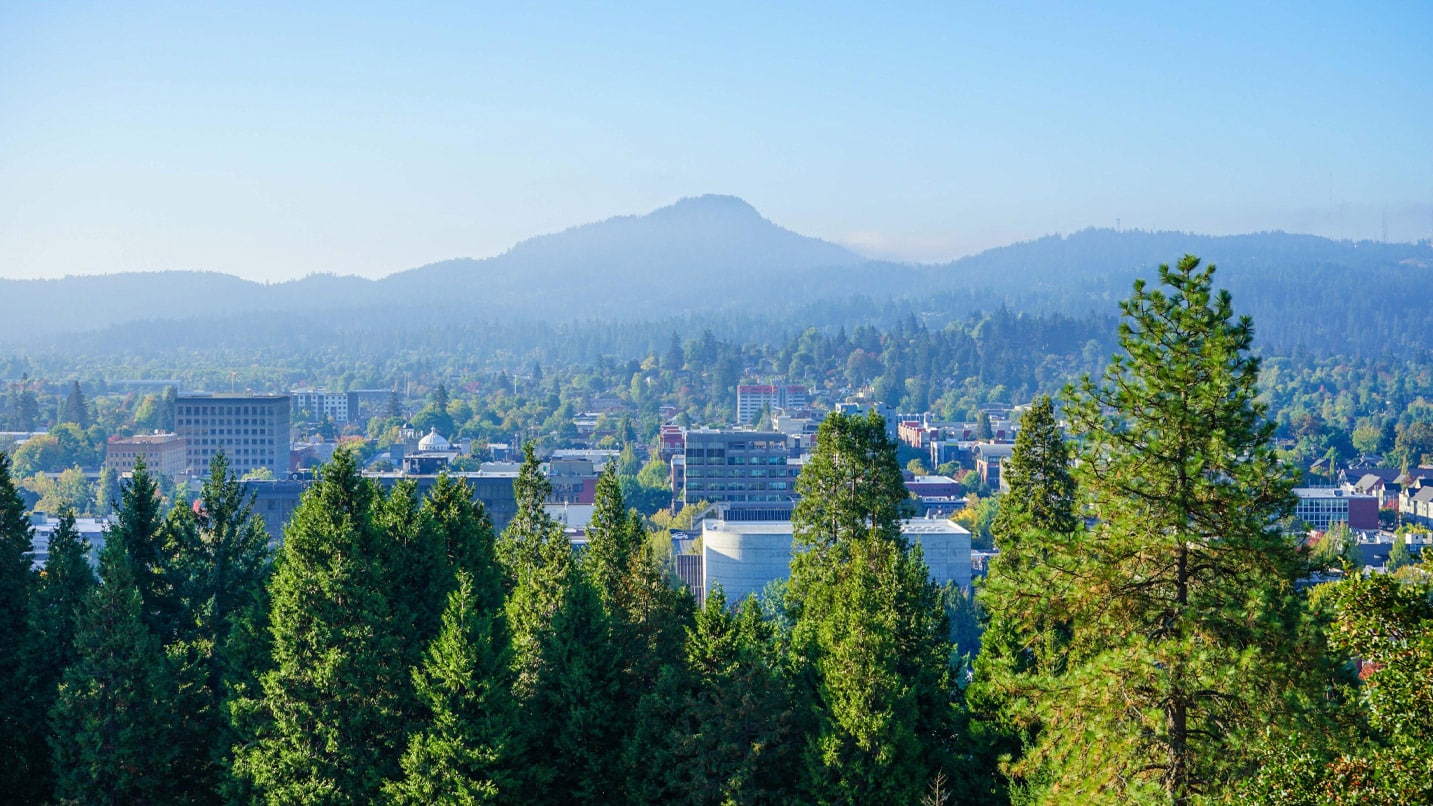
Skinner Butte
Located on the north edge of downtown Eugene, Skinner Butte Park is one of the city’s oldest parks and includes 100 acres along the Willamette River that are considered the birthplace of the city of Eugene. In 1924 the park was also the site of one of Eugene’s most infamous Ku Klux Klan parades, which included fireworks and a cross burning. The Skinner Butte tour offers an opportunity for reflection not just on the beauty of Eugene but on the sobering past. This challenging walk goes all the way up the butte — with plenty of guided stretches.
South Eugene
Wiley Griffon made a home in Eugene in the 1890s, driving the town’s first streetcar service and giving candy to grateful children on the ride. The South Eugene tour features a dedicated mural on Willamette Street that depicts Griffon on his horse-drawn trolley trundling along its route. Walkers can also explore the Eugene Masonic Cemetery, which has a new Griffon monument created in part through the efforts of community organizers I Too Am Eugene. Through that project, local educators Cheri Turpin and Mark Harris aim to increase inclusivity in civic structures and monuments.
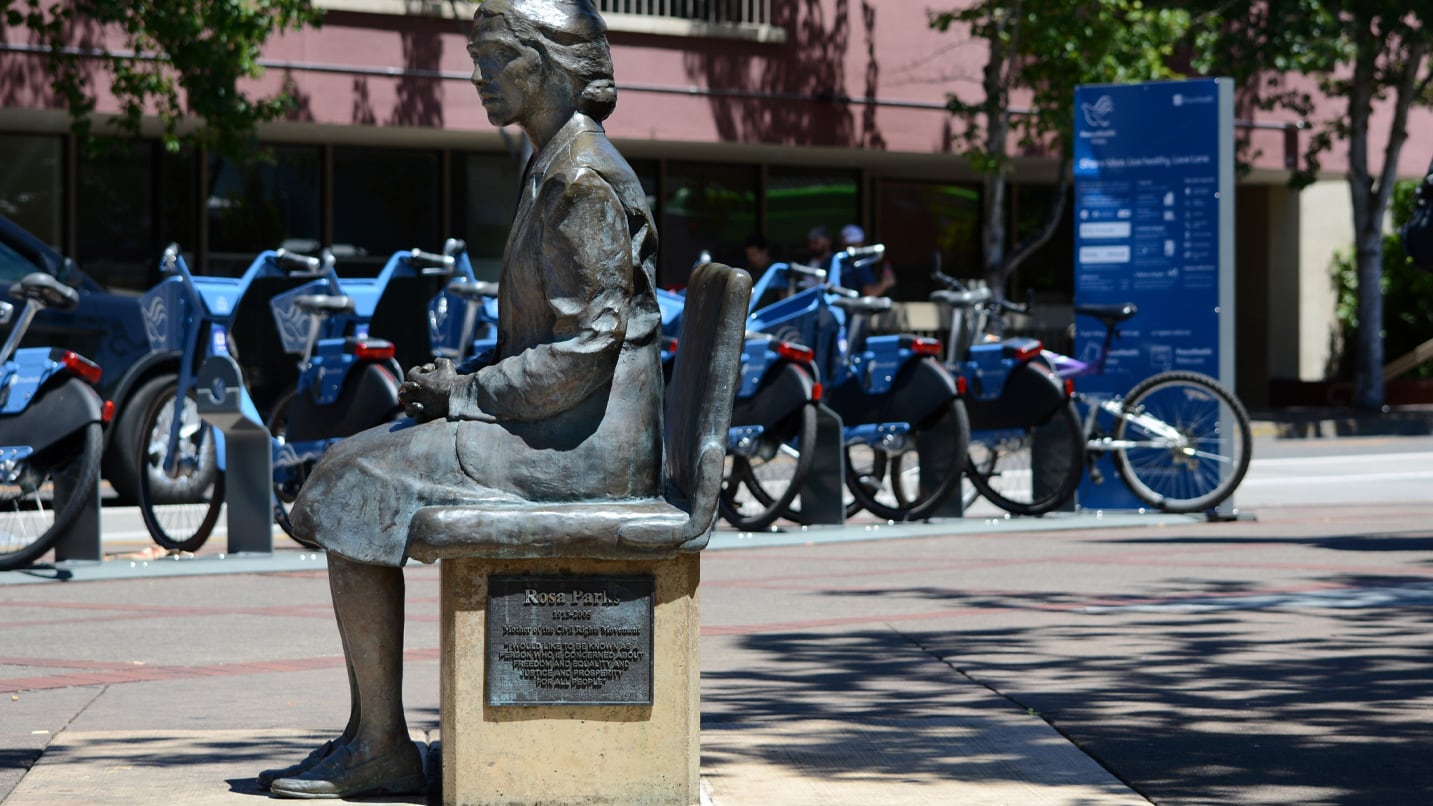
Westmoreland Park
The Westmoreland Park route allows users to try some circuit exercises in a lush, 62-acre park with ball fields and walking paths that once housed Black university students. It’s also the home of the Dr. Edwin Coleman Jr. Community Center, which was named to recognize a beloved University of Oregon professor after his death in 2017. The center’s murals depict Dr. Coleman’s love of literature and music, as well as his community activism.
Focusing on the track occupying the south side of the park (designed as part of Nike’s Reuse-A-Shoe program), the app invites users to honor an Olympian and Oregon Sports Hall of Fame track phenom. The Margaret Johnson Bailes Track celebrates this Olympian’s legacy with a plaque in her honor and gives visitors a chance to run, jog or walk on the loop where history was made.
West Eugene
You can’t talk about the history of Black life in Eugene without mentioning civic leaders Sam and Mattie Reynolds, and the West Eugene community they helped to establish. The Reynolds family moved to Eugene in the early 1940s as part of the Great Migration of Black people from the South. The West Eugene tour passes by St. Mark Christian Methodist Episcopal Church, a Black church whose sanctuary still stands today, and an informative installation at Sam Reynolds Station, a Lane Transit District EmX station on West 11th Avenue and Bertelsen Street, where walkers can take the bus back to downtown.
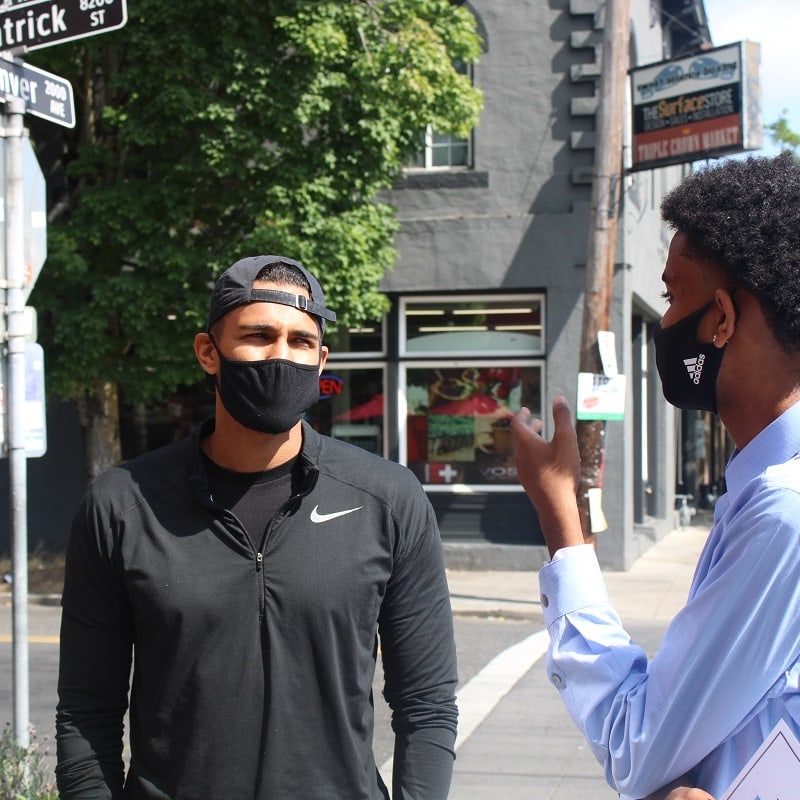
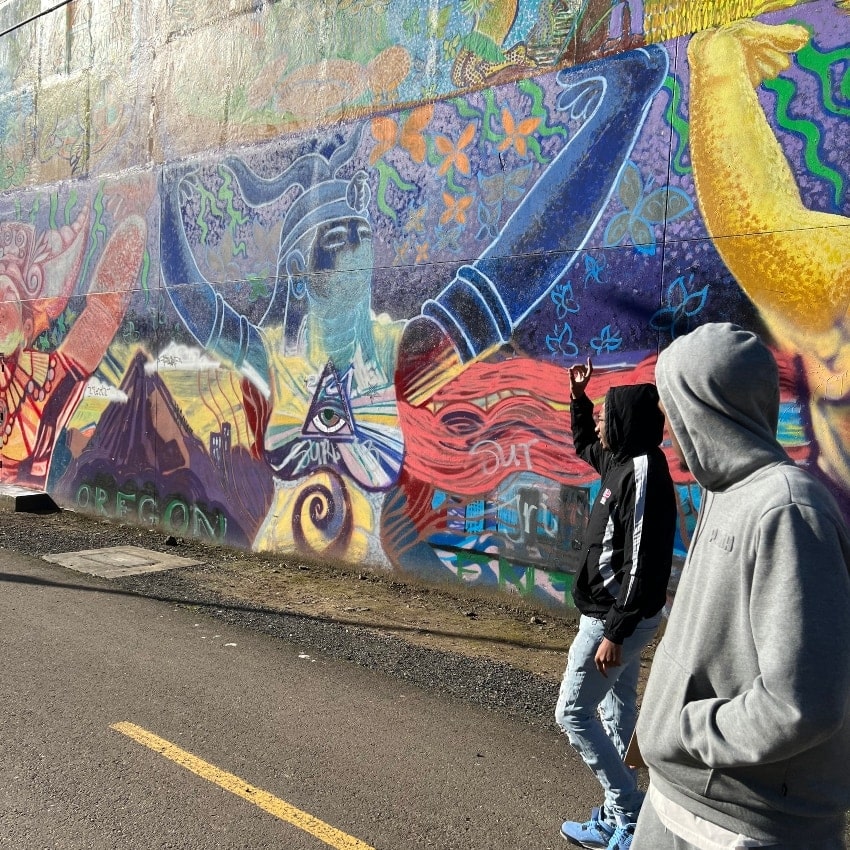
Check Out These Other Events:
- In the Portland area, community members are invited to take part in the guided “In My Shoes” walking tour (check website for next event dates). The event features nine walking tours in neighborhoods across Portland, led by the community ambassadors of Word is Bond, a nonprofit that serves Black men ages 16-21 with leadership and internship programs. The tours are designed to highlight the voices, dreams and experiences of rising Black men as well as the neighborhoods in which they live. Ambassadors will highlight important places in their community, share personal experiences and read original works of poetry. Neighborhoods include Lents, Mt. Scott, Cully, Kenton, Parkrose, North Portland, Southwest Portland and Beaverton.
- In Central Oregon, check out these three free public events held during Black History Month: Fathers Group Film Series at Open Space and Tin Pan, Food Is Culture at Downtown Bend Public Library, and Central Oregon Community College- Examining Inequalities in Central Oregon.
